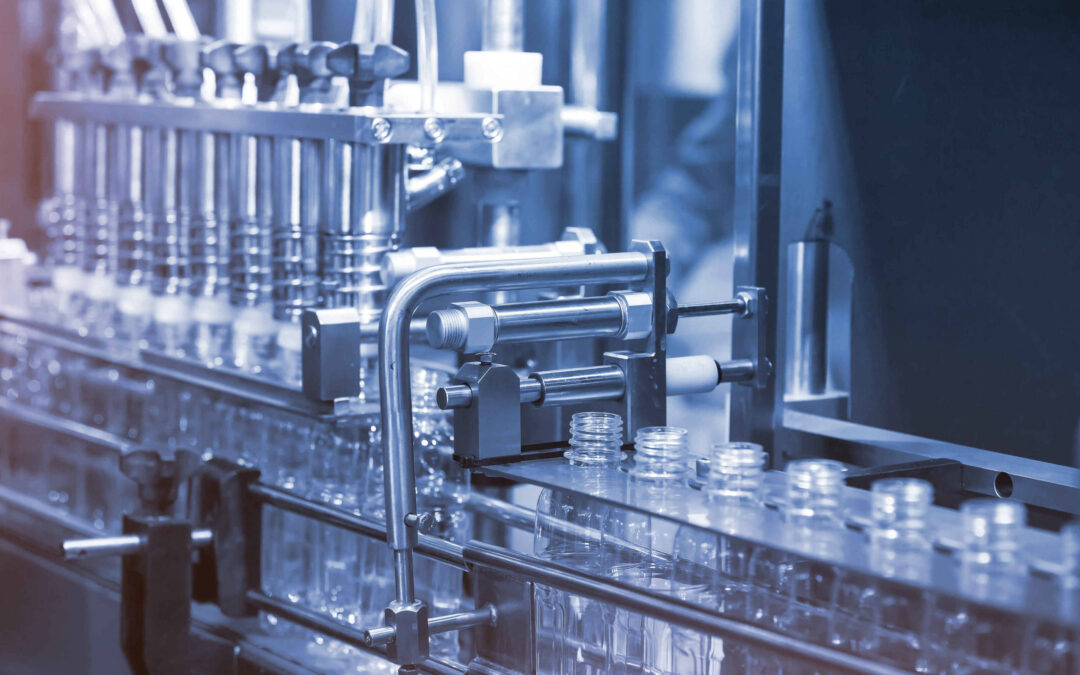A capping machine is a crucial component of any automated bottling line. This machine can cap bottles, jars and other types of resealable packaging quickly and accurately.
Table of contents
- Features of automatic capping machines
- Different types of capping machines
- Capping machines – examples of applications
- Capping machines – summary
Features of automatic capping machines
Nowadays, capping machines can be found on any production line that fills products into containers. They are high-speed machines that operate at high capacity, so while their role and general principle of operation are rather obvious, the exact capping process may not be so clear. This is why we will start with a brief overview of what the process looks like and what is included in the capping equipment.
Capping takes place as soon as the container is filled. Open containers enter the machine and leave it tightly closed. In some instances, the capping machine also seals the packaging so that the final consumer may be certain that no one has tampered with the contents of the container after it has left the production line. For instance, the pharmaceutical business frequently uses this procedure.
In order for the packaging to be closed with a screw cap, it must first be delivered to the container. The cap delivery system is responsible for this. Machine manufacturers employ two distinct systems to complete this task, depending on the kind of the capping machine, the type of packaging and the cap.
The pick-off system is the first of these systems. It uses a precise chute to dispense the caps one by one, which are then “picked up” by containers that are carried on a conveyor under the chute to deliver them to the tightening section. It is mainly utilised in rotary and linear capping machines.
A pick-and-place system, which is the second option, operates on the principle that a robotic arm or manipulator can move along two or three axes. The robot or manipulator has a gripper, which picks up the caps from a tray and places them on the containers. This system is versatile enough to be used for a wide variety of caps and packaging.
Once the cap is on the container, the machine moves on to the most important part of the process: capping. The capping equipment seals the connection between the container and the cap. The type of mechanism used for this depends on the type of machine, since different capping machines employ various tightening systems. When it comes to bottle capping with screw caps, for instance, the capping machine needs to rotate the cap while applying pressure to it in order to seal the packaging.
Different types of capping machines
The capping machine with a tightening head is the most common type of these machines. The capping equipment uses the torque transferred by the head to lower and tighten the cap as soon as the packaging is in place.
Both large plants and small batch production can both use this kind of capping machines. There are three types of capping machines with tightening heads: automatic, semi-automatic and manual capping machines. When using a semi-automatic device, the operator places the cap on the container, which is then tightened by the machine. In most cases, these are the continuous motion machines, which means that the product does not stop when the cap is being tightened and the head screws the cap as the container advances along the conveyor.
Spindle capping machines are another widely used type of capping devices. They use special sets of spinning discs, some of which are powered, to tighten the caps. Once the packaging is in the proper position, the discs are pressed up against the cap, thereby sealing the container. This kind of machinery is intermittent motion equipment, which means that the containers are temporarily stopped on the line during tightening.
Capping machines – examples of applications
The packaging industry makes extensive use of capping machines, which frequently assist the packaging process by fitting and tightening caps. The cosmetics industry is a prime example of this, as it uses a variety of screw-on containers to further secure beauty products.
The food sector as a whole, particularly the brewing industry and bottling plants, which specialise in bottle capping, are the primary customers for producers of capping machines. Food producers, on the other hand, use screw-on jars and containers to hold spices, preserves and a variety of other products. Because of this, the capping machine is very common in the production line of food processing plants.
The agricultural sector also uses capping machines, which make sure that all kinds of dangerous substances are placed in a sealed container in such a way that they cannot leak or be easily accessed by a child. Additionally, capping machines relieve people from working in harmful conditions so that operators do not come into contact with substances that are potentially dangerous for their health.
Another industry where the capping machine is used is, of course, the pharmaceutical sector. Pharmaceutical companies use a wide range of screw-on jars and containers to protect medical supplies until they are delivered to patients. Being able to precisely control the capping process, drug manufacturers can be certain that the products leaving their production lines are properly sealed and protected.
Capping machines – summary
We hope you have learned from our article what a capping machine is and how it works. It may be a fully automatic or a semi-automatic device, where the operator places the caps on each subsequent container before the machine twists them to create a seal.
Capping equipment is what distinguishes the various types of these machines. The most popular model is a machine with a special head that grips the caps and applies torque to tighten them. Another popular type is the spindle capping machine, which tightens the caps using special spinning discs.
If you are thinking about buying a capping machine for your business, we invite you to get in touch with Unilogo using the contact form on our website. We guarantee that our team of skilled engineers will make every effort to develop and present the ideal solution for your company.


